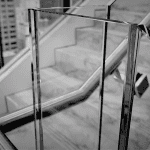Even with advance preparation on lead times, there are inevitably unknown delays discovered later in the project for all teams – we can still put our best efforts to get ahead of them.
One of 2023’s common themes is lead time delays on required products running well in advance of the project – stalling completion. This is an outcome of the supply chain issues that have plagued Architecture and Construction projects since 2020 and continue today. Project teams have not fully adjusted to this, even three years later.
Here’s some examples from different projects I manage, from this summer:
- CRAC (Computer Room AC) units upwards of 20 weeks, on two separate projects – both due to the lack of chips & electronic components required for the Air Conditioners. As an example, on one project our CRAC unit delivery is moved to late December, despite being procured on time in April 2023, for an October delivery. HVAC/CRAC unit lead times are extremely long as of late-2023.
- Carpet delays upwards of 16 weeks – on one project, the delay was caused by the manufacturer’s factory not having yarn available to produce the desired line. I’ve noticed these same type of delays on other projects, for custom rugs coordinated with our furniture vendors.
- Lighting supplier delays due to production lagging behind the requested delivery timeline – often dependent on where globally the units are being manufactured.
When you look at the details, these situations could have been averted with more careful planning and care – considering available supplies when specifications were being chosen.

Lighting Fixture Delays from Manufacturer Holiday
I’ll use my last example in detail – lighting fixture delays on a project due for move-in this October. The schedule requires lights delivered by early September, allowing install time prior to other finishes being installed all around.
In early August, we learned that several fixture lines on our project (now well in construction) were delayed – they would instead arrive by late September. Our lighting designer checked with the Italian supplier, who advised they don’t have an order yet. Our team approved submittals on August 3rd, but that timing was the beginning of the Italian holiday season of August.
Our schedule was always to move in October, which means these would be required on site by end of August. Uniquely, Italy effectively closes for business in August, meaning no deliveries in August.
This should have been known when the fixture was specified – where it was coming from, the timing of submittals, approvals, and manufacture, and if the manufacturer factory making the lights would be closed for an entire month, when we most needed them manufactured. Our schedule was always fixed, with construction starting in April and ending by October, and this was always known.
By the time it was late August, the supplier vendor first advised trying to split the shipment up to get recessed housing and mounting hardware first and the rest of the LED guts to follow; and soon later confirmed housings & remote drivers can ship in 3-4 weeks as partial in advance (the air freight would be paid for by the vendor), whereas the fixtures themselves come from Italy in 6-8 weeks.
We still didn’t know if the order would be released this week – naturally, because the suppliers are closed! It forced the lighting rep checking into options to air freight fixtures so that they arrive to our project – still late, but earlier than if not by air freight.
Vendors and Project Teams should take absolute care to ensure that Specifications are made with lead times and production in mind; and the Owner/PM side should also
Here are some recommendations on how to address this process with your project team:
- Long Lead Items should be identified well in advance, and also procured in pre-purchase packages.
- At minimum, HVAC units and Lighting should be considered and procured well in advance. This is usually standard practice under a CM (Construction Management) agreement, yet the process should start sooner rather than later.
- This should be checked at least two times, if not more, with the preferred vendor
- Including confirmation that they have supplies in hand.
- Discontinued items, especially discontinued finishes, should be confirmed early, and if notified these should be picked up by the vendor quickly, before they go out of stock.
- Other rare, auction type items should just be procured, and then put in storage until it’s time to install – these include rare lighting fixtures, chandeliers, antique furniture pieces, art, and more.
Even with advance preparation on lead times, there are inevitably unknown delays discovered later in the project for all teams – we can still put our best efforts to get ahead of them.





 Table Of Contents
Table Of Contents

Leave a Reply